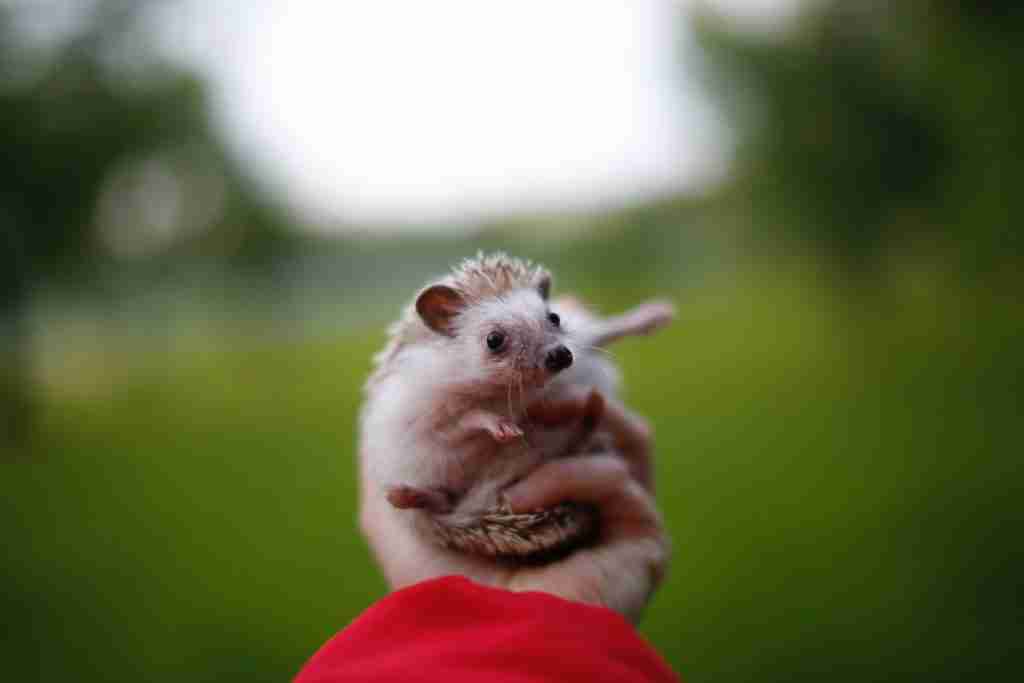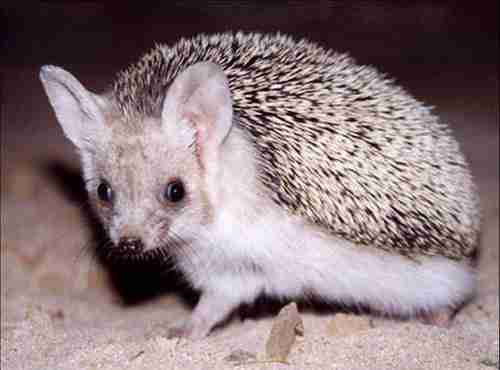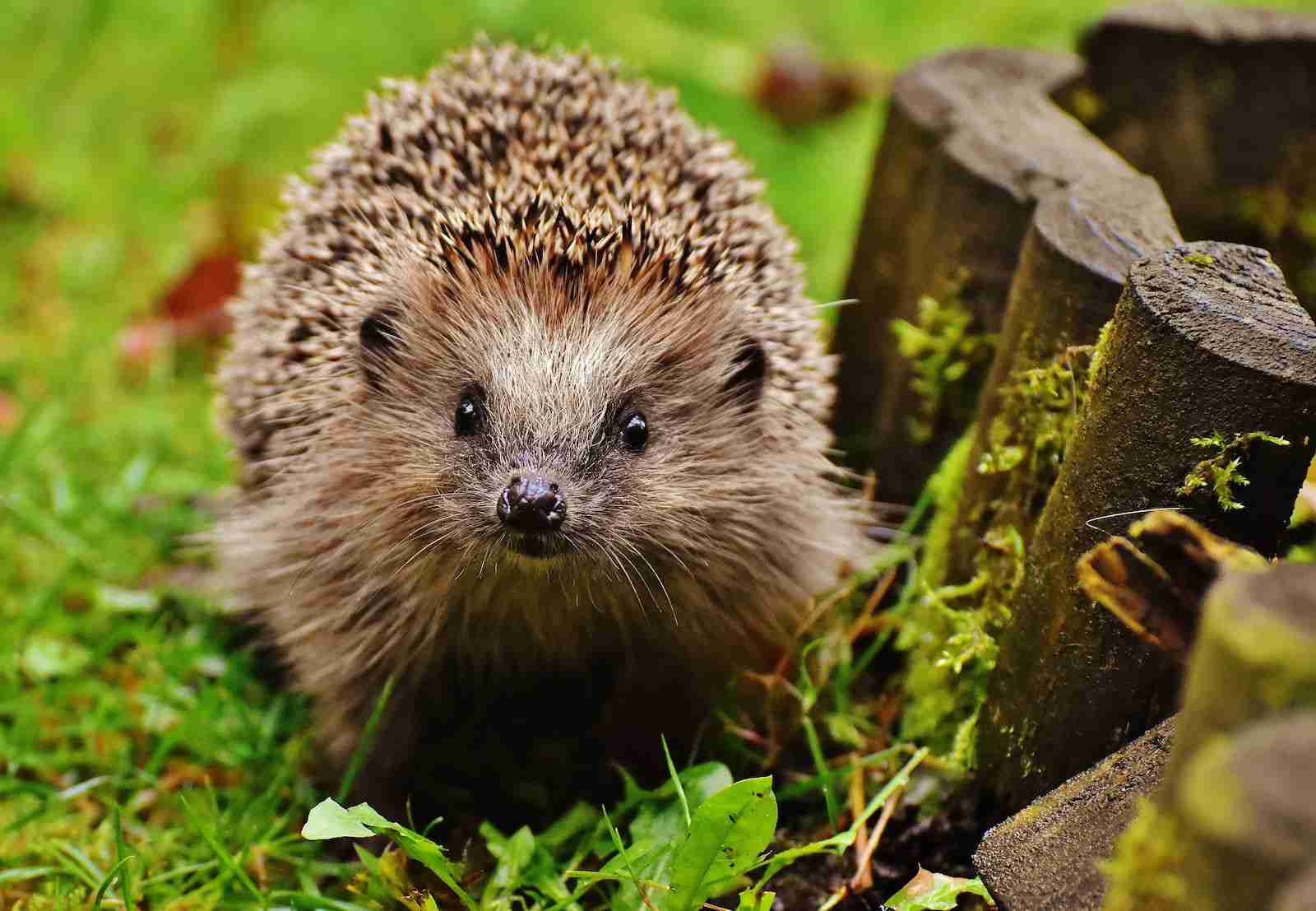22 Fun Facts About Hedgehogs | Spiky Quills
1. A hedgehog has between 5000 and 7000 quills.
A hedgehog is covered with 5,000 to 7,000 quills, each made of keratin, like human hair and nails—these spiky defenses, which they shed and replace like hair, last about a year each. They can also carry parasites on their quills.
This protective armor is the hedgehog’s main defense against predators, with each quill a part of a dense layer providing effective protection for these small, spiky creatures.
2. Hedgehogs are nocturnal animals.
Hedgehogs are primarily nocturnal, sleeping 18 hours a day in their burrows and becoming active at night to search for food. They may also be active during the day, especially after rain.
In colder climates, they hibernate in winter, while in desert areas, they aestivate during extreme heat and drought, adapting their sleep patterns to their environment.
3. Hedgehogs, with poor eyesight, rely on hearing and smell for hunting.
Hedgehogs have poor eyesight, especially in daylight, making them rely more on their excellent sense of smell and hearing for hunting and navigation. Their long snout and wet nose enhance their smell, while large ears provide sharp hearing.
This adaptation suits their nocturnal lifestyle. Baby hedgehogs are born blind, developing sight gradually, but their vision remains less relied upon throughout their lives.
4. Hedgehogs are immune to snake venom.
Hedgehogs possess a remarkable resistance to snake venom, though not complete immunity. Living in Africa, these spiny creatures not only use their quills as a physical defense but also have a biological defense against snakes. In confrontations, they can even consume snakes post-fight.
Additionally, hedgehogs exhibit a unique behavior called ‘self-anointing,’ where they spread saliva on their quills when encountering strong odors or tastes. Their plasma can neutralize certain snake venoms.
5. The lifespan of a Hedgehog ranges from 3.5 to 9 years.
Hedgehogs typically live between 3.5 and 9 years, with some rare cases living longer. The oldest recorded European hedgehog lived up to 16 years, far exceeding the usual lifespan.
About 30% of hedgehogs die before reaching one year, primarily due to road accidents, while others perish in rehabilitation centers or due to natural causes. Their population has seen a significant decline in recent years.
6. Hedgehogs cannot digest lactose.
Hedgehogs are lactose intolerant as they lack the lactase enzyme needed to digest lactose in milk, leading to digestive issues like diarrhea. It’s advised not to feed them milk, milk-based foods, or bread, which aren’t nutritious for them.
Additionally, avoid giving them nuts, seeds, or hard foods like raw carrots, as these can get stuck in their mouths. Always ensure fresh water and suitable food are available.
7. A group of Hedgehogs is known as an array.
A group of hedgehogs is commonly referred to as a ‘prickle,’ though ‘array’ and ‘nest’ are also used. However, spotting a group, or prickle, of hedgehogs is rare, as they are solitary animals.
They typically only come together during the mating season, making the occurrence of such gatherings quite uncommon in their generally solitary lifestyle.
8. Hedgehogs can suffer from balloon syndrome.
Hedgehogs can experience a rare condition called balloon syndrome, where gas gets trapped under their skin due to injury or infection, causing them to inflate. This condition is painful, as the skin stretches tightly and the trapped air compresses their organs.
Balloon syndrome is similar to surgical emphysema in humans but is more severe in hedgehogs because of their unique tissue structure. Pain relief is a critical first step in treatment.
9. Hedgehogs were considered sacred in classical Persian culture.
In ancient Persian Zoroastrianism, hedgehogs were revered as sacred animals, believed to be created by Ahura Mazda to control ant infestations. They were commonly kept as pets in homes for their insect-eating abilities and to ward off vipers and evil spirits.
In ancient Egypt, hedgehogs were admired for their defensive traits, with their images and spines used in medico-magical practices and tomb art for protective purposes.
10. Hedgehogs can raise and lower their spines in response to threats.
Hedgehogs raise and lower their spines as a defense mechanism when threatened. These spines, apart from deterring predators, are impact-resistant, cushioning the hedgehog during falls from heights, like when climbing trees.
This shock-absorbing ability helps hedgehogs survive high falls without injury, showcasing the spines’ dual role in protection and survival in the wild.
11. The oldest known Hedgehog lived up to 16 years.
The oldest known hedgehog, Thorvald, was a European Hedgehog from Denmark, living up to 16 years. His age was determined by analyzing growth lines in his jawbone.
Thorvald surpassed the previous record of 9 years, setting a new standard for hedgehog longevity. Unfortunately, he passed away in 2016 at a wildlife rehabilitation center in Silkeborg after a dog attack, a common hazard for hedgehogs.
12. An average Hedgehog has 44 teeth.

Hedgehogs have a full set of teeth, ranging from 34 to 44 in total, including incisors, premolars, molars, and canines. They develop their first set of milk teeth at around 2-3 weeks old and have them throughout their lives, enabling them to effectively chew and grab food.
While primarily known for their spines, hedgehogs’ teeth play a crucial role in their ability to feed and defend themselves.
13. Hedgehogs are a part of British cultural heritage.
Hedgehogs, native to Britain and integral to its ecosystem, play a crucial role in the food chain by consuming invertebrates. Despite existing for about 20 million years, their UK population has declined by a third in the last decade, with less than a million remaining.
These creatures are also found across northern and western Europe, North Africa, the Middle East, and Central Asia.
14. Hedgehogs prefer solitude except during mating.
Hedgehogs are naturally solitary animals, preferring to live alone. They thrive best when not housed with other animals, including other hedgehogs, except under specific circumstances like housing two females together.
The primary exception to their solitude is during mating when they seek company. Otherwise, they hunt, feed, and sleep alone, emphasizing their preference for a solitary lifestyle in their enclosure.
15. Some cultures consider Hedgehogs a delicacy.
In some cultures, hedgehogs are considered a delicacy and used for medicinal purposes. The Romani people, for instance, eat them boiled or roasted, and utilize their blood and fat as medicine.
Historically, hedgehogs were consumed in ancient Egypt and during the Late Middle Ages in Europe. Their meat was also traded across Eurasia and Africa for traditional medicine, reflecting their varied cultural significance.
16. Hedgehogs are legal pets in most U.S. states, requiring care.

Hedgehogs can be fun, low-maintenance pets, requiring patience and care to build trust. Laws vary by country; in the U.S., they’re legal in most states. The African pygmy hedgehog is a popular choice.
They need a nutritious diet, regular exercise, veterinary care, and a spacious enclosure with toys and an exercise wheel. Responsible breeding and proper husbandry are crucial for their well-being.
17. Hedgehogs have appeared in movies like Alice In Wonderland.
Hedgehogs were featured in the 1951 Disney film ‘Alice in Wonderland,’ where they were whimsically used as croquet balls by the Queen of Hearts. This portrayal originated from Lewis Carroll’s 1865 novel ‘Alice’s Adventures in Wonderland.’
In a memorable croquet scene, the Queen uses a green hedgehog, leading to a humorous and chaotic sequence, illustrating the hedgehogs’ unique role in this classic story.
18. There was a popular myth that Hedgehogs drank milk from cows.
There was a myth in old peasant cultures that wild hedgehogs drank milk from cows at night. However, this has been proven untrue. Hedgehogs are lactose intolerant, and milk consumption can cause them digestive issues like diarrhea.
The myth likely arose from stories of hedgehogs near cows in fields, but recent studies and information from the RSPCA have debunked this belief.
19. Cars are a significant threat to hedgehogs.
Cars pose a significant threat to hedgehogs, often resulting in fatal accidents. Studies have shown varying impacts of traffic on hedgehog populations. Their natural defense of rolling up makes them vulnerable on roads, leading to increased fatalities as car numbers rise.
For example, in one study, only a small percentage of tracked hedgehogs were killed on busy roads, but in a London golf course study, about 18% of hedgehog deaths were due to traffic.
20. Long-eared hedgehogs can carry diseases.

Long-eared hedgehogs, native to Central Asia and parts of the Middle East, are prone to parasites and can carry serious diseases like plague. They live in burrows and are notable for their long ears.
If kept as pets, it’s crucial to buy them from reputable dealers to avoid the risk of diseases, such as those transmitted by the brown dog tick, Rhipicephalus sanguineus, or Boutonneuse fever.
21. Hedgehogs exhibit a unique behavior called anointing.
Hedgehogs display a distinctive behavior known as self-anointing or anting. They create a frothy saliva mixture, which they then spread over their spines.
This process can take from a few minutes to several hours, during which the hedgehog is completely focused, ignoring its surroundings. Triggered by strong-smelling substances, the purpose of this behavior remains a mystery, showcasing the hedgehog’s unique and intriguing nature.
22. The Sonic Hedgehog protein was discovered in 1980.
The Sonic Hedgehog protein, essential for animal and human development, was discovered in 1980 by Nüsslein-Volhard and Wieschaus. They identified it during a mutagenesis screen in Drosophila, noticing that mutations in this gene caused abnormal segmentation.
This protein, playing a crucial role in digit and brain development, is named after the early 90s video game character Sonic the Hedgehog, reflecting its unique developmental influence.
FAQs
Hedgehogs inhabit diverse environments, including deserts, forests, hedgerows, farmlands, and urban gardens across Europe, Asia, and parts of Africa. They live on the ground, often in burrows or nests made of leaves and branches.
Hedgehogs have varied colors, from white to black, with banded quills. Their bellies, faces, and necks have coarse hair, sometimes featuring a dark mask. They have small, powerful legs, big feet with five toes, and protective spines except on their faces, legs, and bellies, which they shield by curling into a ball.
Hedgehogs can be enjoyable, low-maintenance pets with proper care and handling, despite their sharp quills. They’re suitable for owners comfortable with less cuddly pets, feeding insects, and nocturnal activity, as they’re sensitive and mostly active at night.
Hedgehogs protect themselves with stiff, sharp spines covering their bodies. When threatened, they curl into a tight ball, concealing their face, legs, and belly, which lack spines. This defensive posture deters most predators and is also used during sleep.
Feed hedgehogs meat-based wet dog/cat food, or dry cat/kitten food as a supplement to their natural diet of insects and worms. Avoid giving them milk or bread. They primarily eat worms, beetles, slugs, caterpillars, earwigs, millipedes, and occasionally carrion, frogs, baby rodents, birds’ eggs, and fallen fruit.







